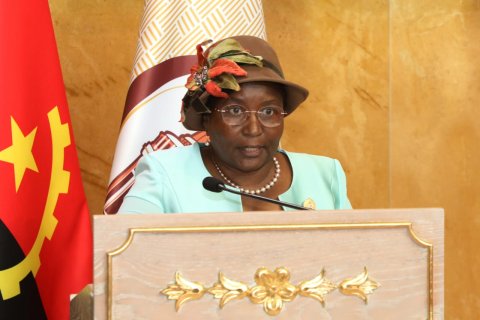The global analysis found that more than one billion people in the world currently live with obesity and that obesity rates among children and adolescents around the world increased fourfold between 1990 and 2022, while obesity rates among adults more than doubled.
The study also looked at rates of underweight, which have declined among children, teenagers and adults, which has led to “obesity becoming the most common form of malnutrition in many countries”.
This was the trend recorded in CPLP countries, where underweight rates decreased, while obesity rates increased.
In Angola, 670,000 women are underweight, representing 8.7 percent, a decrease of 4.5 percentage points compared to 1990. Among men, 730,000 are underweight, a prevalence of 10.5 percent ( minus 8.1 percentage points).
At younger ages, 420,000 girls are underweight, while there are 500,000 boys in this situation.
In terms of obesity, there are 1.3 million women in this condition - 16.9 percent prevalence, an increase of 12.2 percentage points compared to 1990.
There are 420,000 Angolan men with obesity, a prevalence of 6.5 percent, registering an increase of five percentage points in this period (1990 – 2022).
In the country there are 230,000 girls and 390,000 boys with obesity.
Cape Verde also registered a decrease in underweight in women, who are now 8,100, and in men: 8,300.
In this archipelago there are 43,000 women with obesity, that is, a prevalence of 23.8 percent, an increase of 19 percentage points compared to 1990.
In men, obesity has also increased in Cape Verde, with 15,000 in this situation (a prevalence of 8.8 percent), with an increase of seven percentage points in the period under analysis.
Among younger people, obesity increased by 4.6 percentage points in girls (there are 4200 in this situation) and 2.5 percentage points in boys (2300).
Brazil has 2.1 million women and 1.5 million men who are underweight, with the prevalence decreasing, as in girls (580,000) and boys (610,000).
In terms of obesity, there are 27 million obese Brazilian women, with an increase of 20.7 percentage points compared to 1990, with a prevalence now of 32.6 percent.
In men, obesity reaches 19 million (prevalence of 25 percent), with the greatest increase in male obesity in CPLP countries: 19.2 percentage points.
The growth of obesity in Brazil also affects younger people, with 3.1 million girls and 3.9 million boys.
Underweight also decreased in Guinea-Bissau – 45,000 women and 45,000 men -, as well as in girls (16,000) and boys (43,000).
Obesity also increased among women (73,000, 12.8 percentage points more) and men (33,000, 6.7 percentage points more).
At younger ages, there are 13,000 obese girls and 18,000 obese boys in Guinea-Bissau.
In Mozambique, 750,000 women and 720,000 are underweight, with 290,000 girls and 300,000 boys in this situation.
One million women suffer from obesity (11.8 percentage points more than in 1990) and 390,000 men (5.5 percentage point increase).
There are 110,000 obese Mozambican girls and 100,000 boys.
Equatorial Guinea, where underweight decreased in women (9,100), men (65,000), girls (14,000) and boys (23,000), saw the largest increase in the CPLP of obesity in women (95,000, plus 20.8 percentage points) .
There are 33,000 obese men, a prevalence of 8.1 percent and an increase of 6.3 percentage points.
Among younger people, obesity also increased: 10,000 girls and 14,000 obese boys.
Timor-Leste, which occupies second place in a ranking drawn up in this study with the ten countries with the lowest prevalence of obesity, saw a decline in underweight among adults and young people.
As for obesity, there are 11,000 obese women in that country, 2.8 percentage points more than in 1990, and 6000 men (1.4 percentage points more).
Obese girls in Timor-Leste increased to 1900 and boys to 2200.
In São Tomé and Príncipe, underweight also decreased in women (3300), men (3100), girls (930) and boys (3200).
In this country there was an increase in obesity in women (12,000, 19.2 percentage points more) and men (4,900, 8.4 percentage points more).
Obesity has also increased among girls (1400) and boys (2100) in São Tomé since 1990.
This study was carried out by the NCD Risk Factor Collaboration (NCD-RisC), in collaboration with the World Health Organization (WHO), with researchers analyzing the weight and height measurements of more than 220 million people, aged the same or older five years, representing more than 190 countries.







